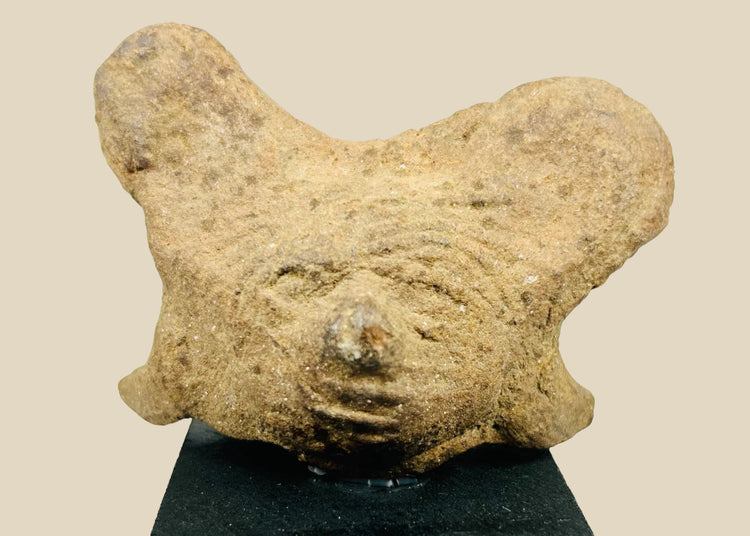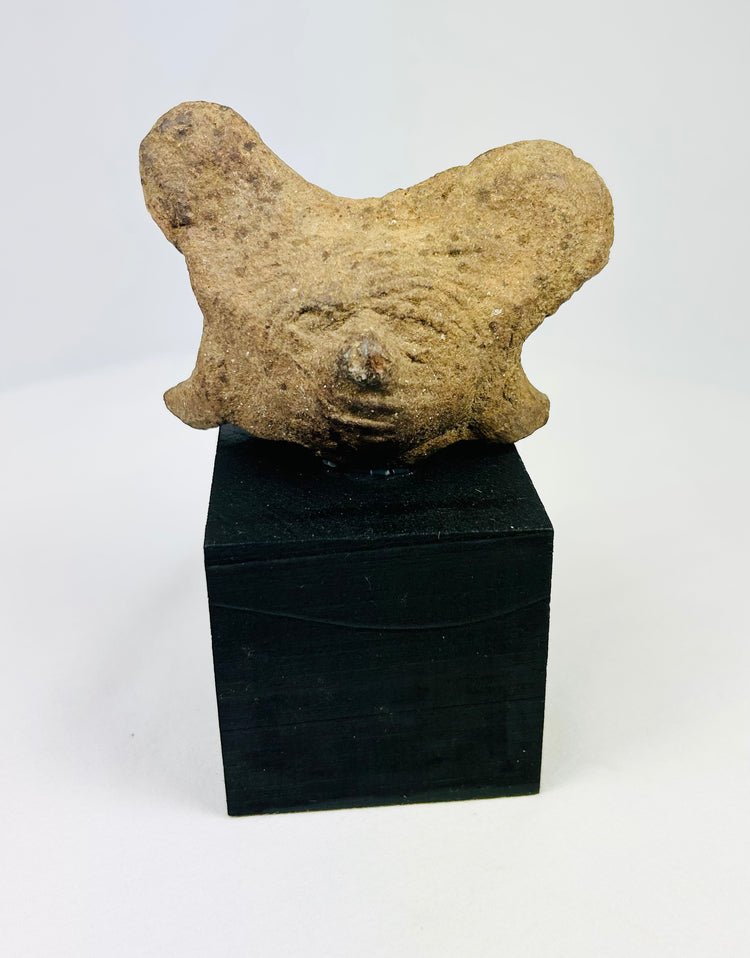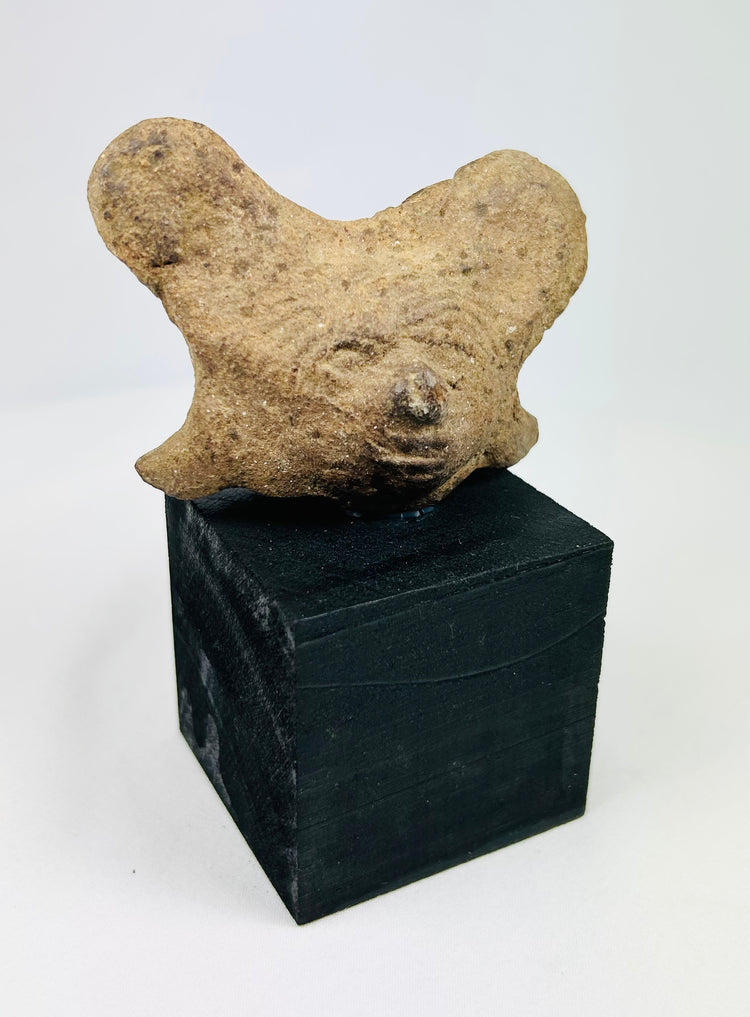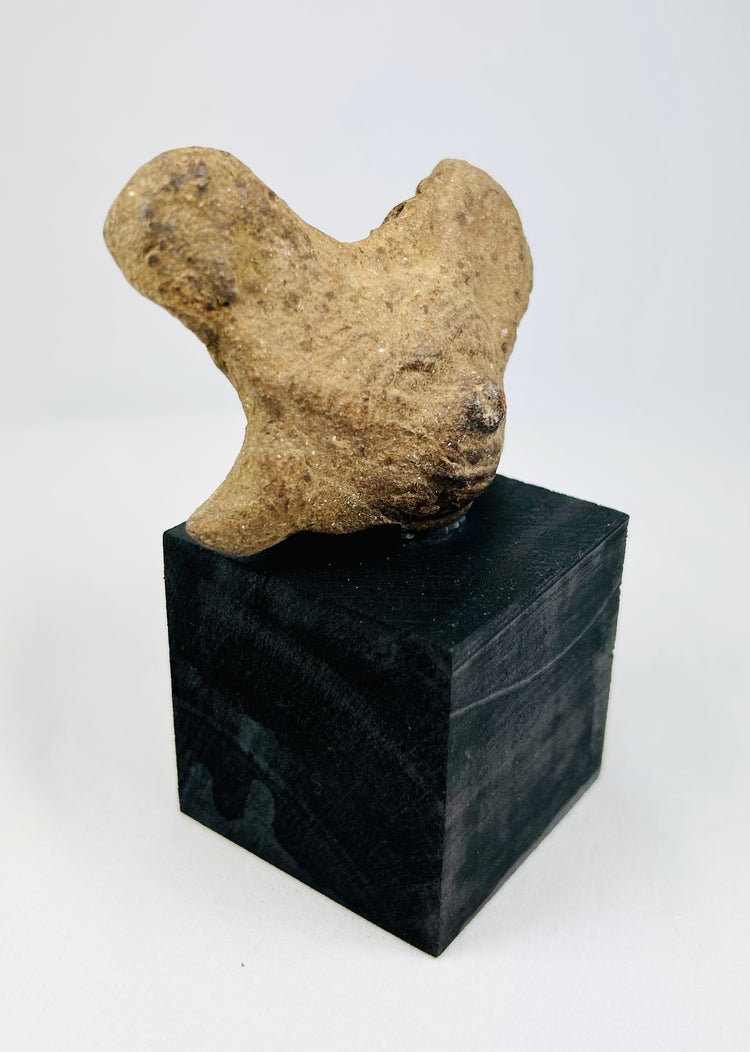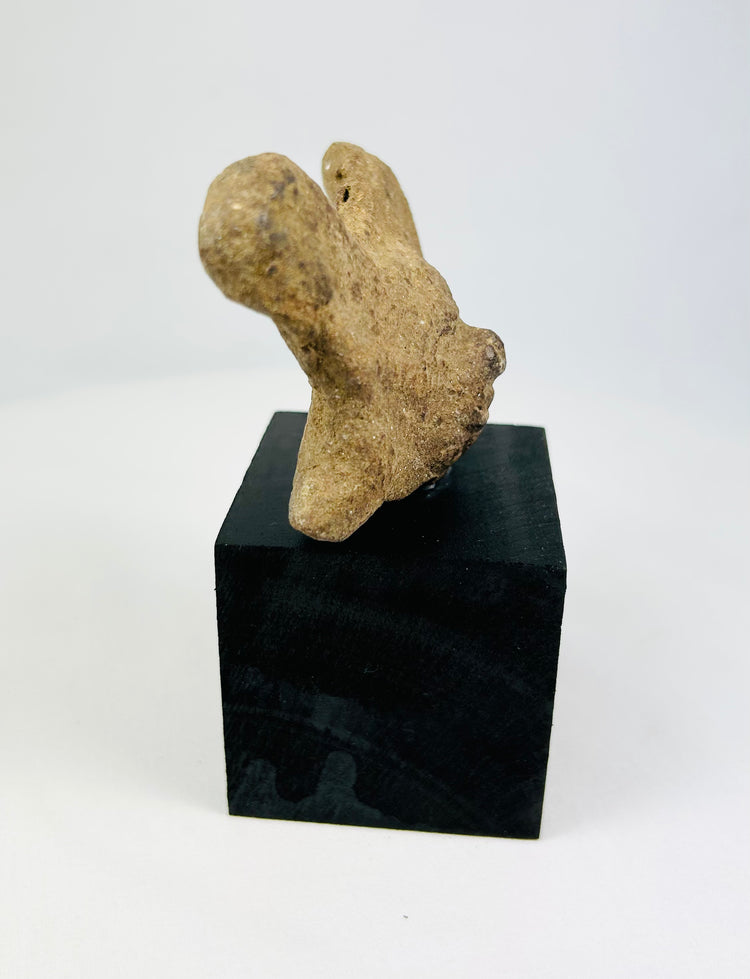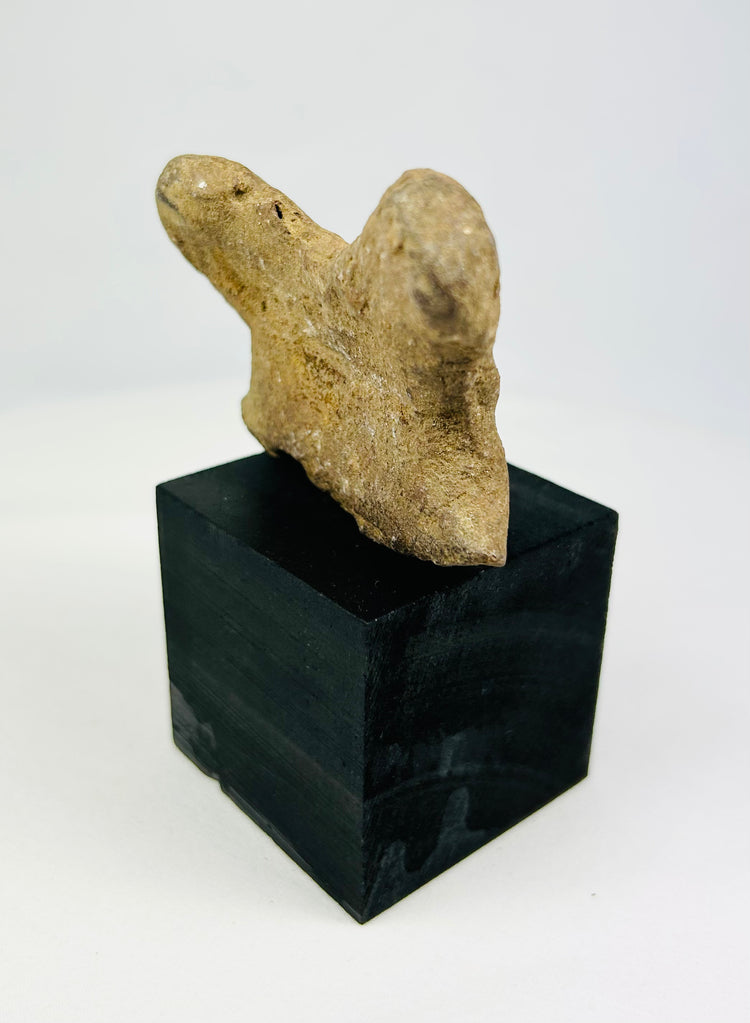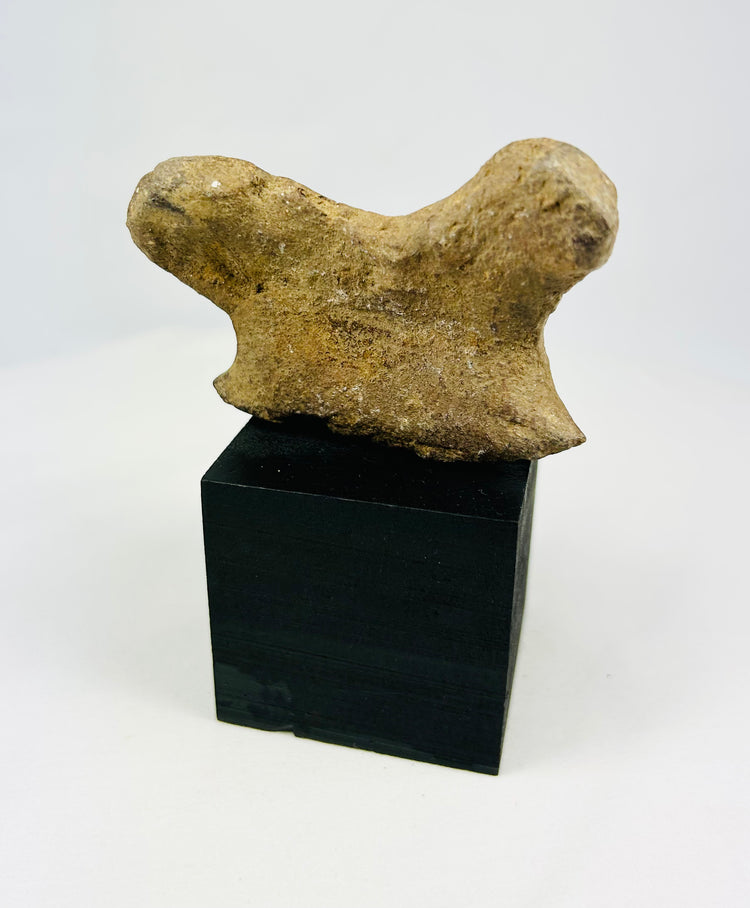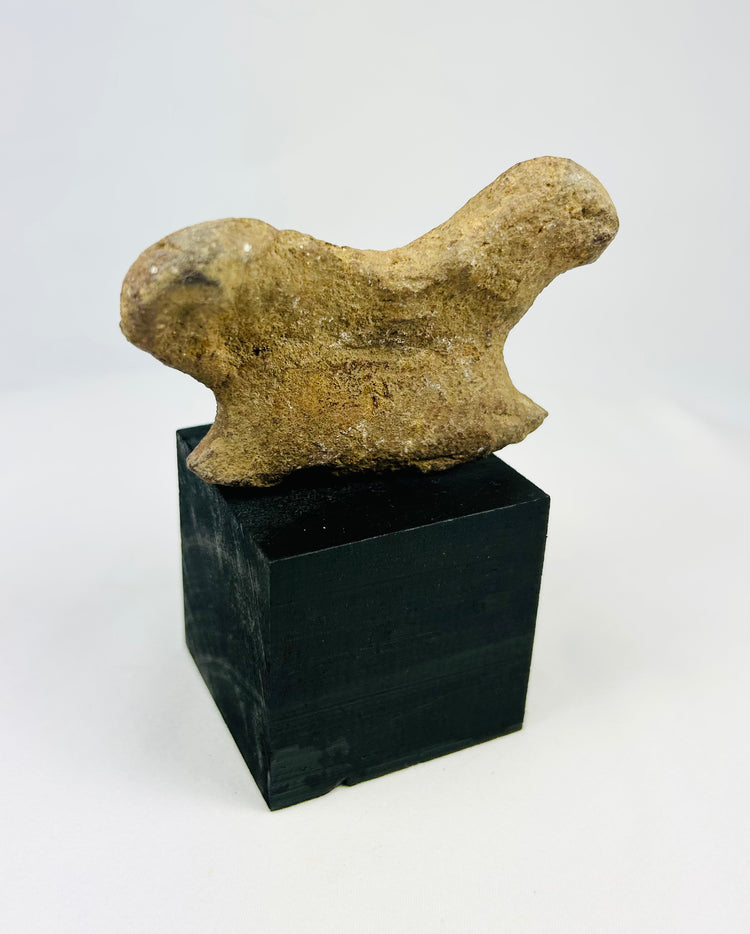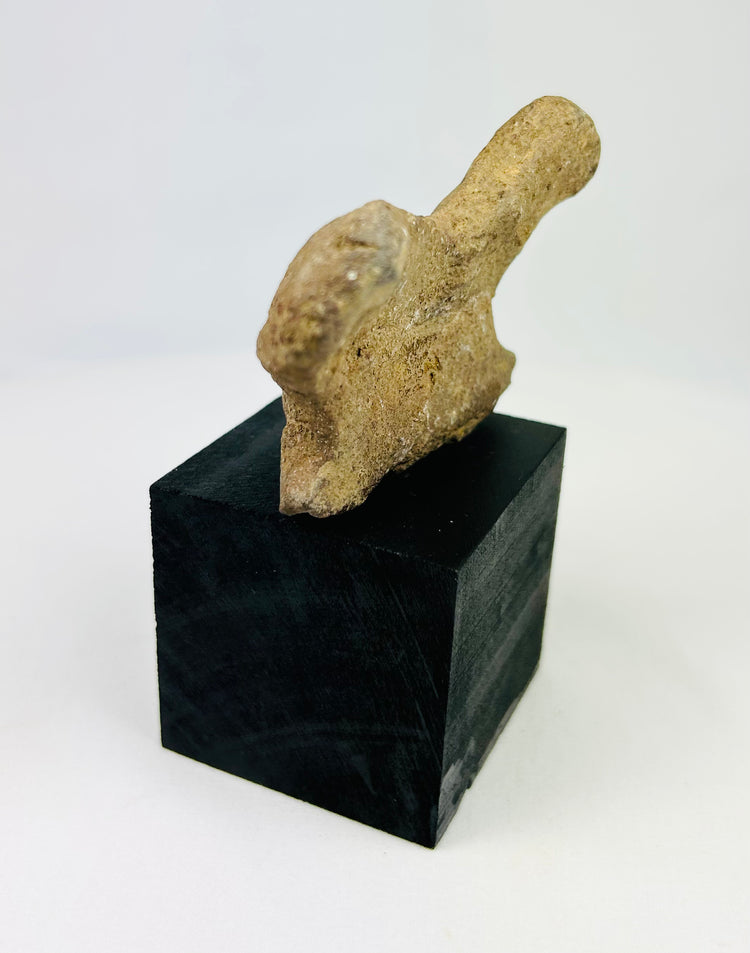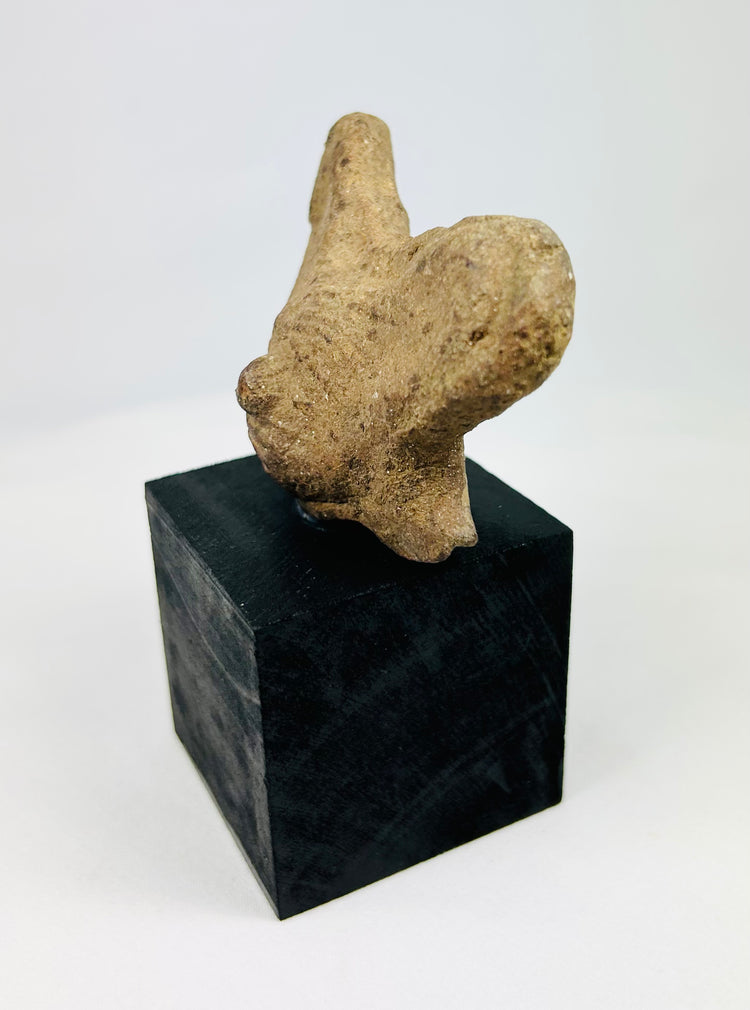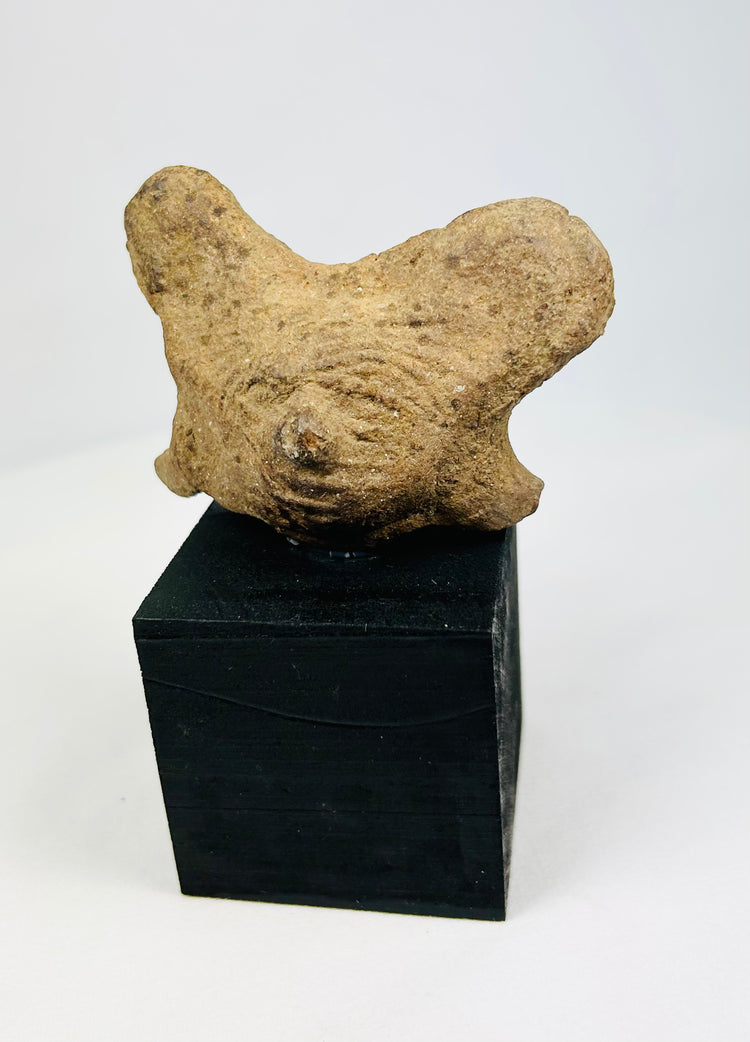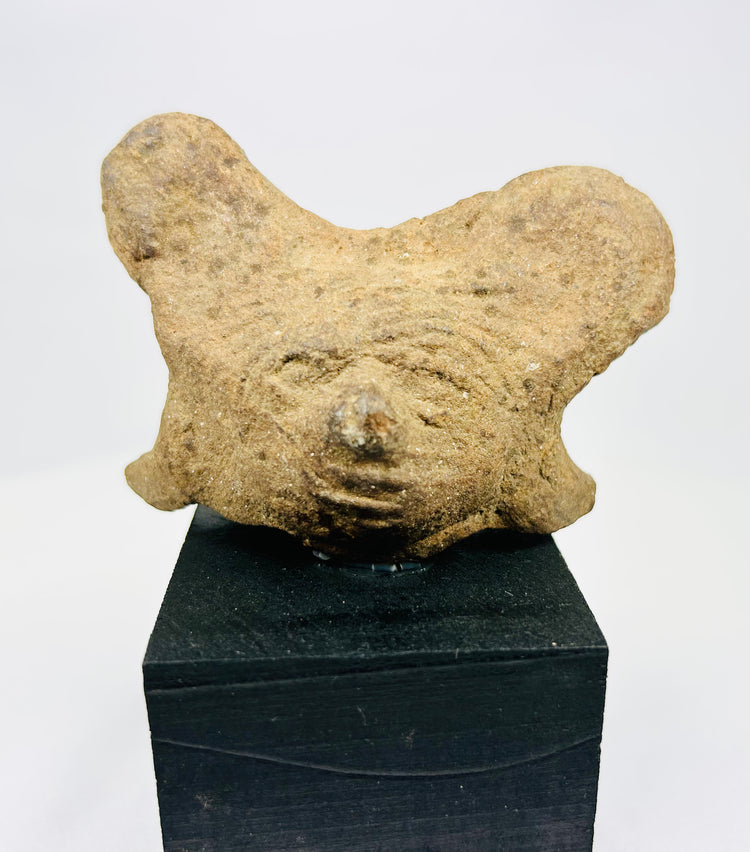Pre-Columbian | Funerary Terracotta Head Fragment | 300 BCE – 500 CE
Description
More
Less
Historical Context & Origin
Region: West Mexico (likely Nayarit or Colima)
Material: Hand-modeled terracotta with mineral accretions
Period: Pre-Columbian, circa 300 BCE – 500 CE
Description
This fragmentary terracotta head originates from the shaft-tomb cultures of West Mexico, a tradition known for expressive funerary sculpture. Abstractly modeled with protruding facial features and a rounded crown, the head once belonged to a larger ancestral or guardian figure placed within elite tombs. The surface retains mineral encrustations and earthen accretions from burial, underscoring its authenticity and great age. Now presented on a modern black display base, it remains a powerful vestige of Mesoamerican ritual art.
Features
- Hand-modeled terracotta head fragment
- Stylized facial features and rounded crown form
- Burial accretions and weathered patina consistent with antiquity
- Strong parallels to West Mexican shaft-tomb funerary culture
- Mounted on a custom display base
Cultural Significance
Figures from the shaft-tomb tradition served as guardians and companions for the deceased, embodying ancestral presence, fertility, and spiritual protection. Even in fragmentary form, this head retains its symbolic power, reflecting both the artistry and religious worldview of ancient West Mexico. Collectors and institutions value such examples for their rarity and connection to one of Mesoamerica’s most enigmatic traditions.
Condition
Head fragment only; body absent. Surface wear, patina, and mineral deposits consistent with long burial. Stable and display-ready.
Dimensions (approximate)
Height: 4 in
Width: 2 in
Depth: 2 in
Age
Circa 300 BCE – 500 CE
Learn More
Discover a comparable museum example of terracotta funerary plaque: Fragment of a terracotta funerary plaque - The Met Museum
Explore our curated collection of museum-quality Pre-Columbian relics: Ancient Pre-Columbian Artifacts – Relic And Rarity
Description
Historical Context & Origin
Region: West Mexico (likely Nayarit or Colima)
Material: Hand-modeled terracotta with mineral accretions
Period: Pre-Columbian, circa 300 BCE – 500 CE
Description
This fragmentary terracotta head originates from the shaft-tomb cultures of West Mexico, a tradition known for expressive funerary sculpture. Abstractly modeled with protruding facial features and a rounded crown, the head once belonged to a larger ancestral or guardian figure placed within elite tombs. The surface retains mineral encrustations and earthen accretions from burial, underscoring its authenticity and great age. Now presented on a modern black display base, it remains a powerful vestige of Mesoamerican ritual art.
Features
- Hand-modeled terracotta head fragment
- Stylized facial features and rounded crown form
- Burial accretions and weathered patina consistent with antiquity
- Strong parallels to West Mexican shaft-tomb funerary culture
- Mounted on a custom display base
Cultural Significance
Figures from the shaft-tomb tradition served as guardians and companions for the deceased, embodying ancestral presence, fertility, and spiritual protection. Even in fragmentary form, this head retains its symbolic power, reflecting both the artistry and religious worldview of ancient West Mexico. Collectors and institutions value such examples for their rarity and connection to one of Mesoamerica’s most enigmatic traditions.
Condition
Head fragment only; body absent. Surface wear, patina, and mineral deposits consistent with long burial. Stable and display-ready.
Dimensions (approximate)
Height: 4 in
Width: 2 in
Depth: 2 in
Age
Circa 300 BCE – 500 CE
Learn More
Discover a comparable museum example of terracotta funerary plaque: Fragment of a terracotta funerary plaque - The Met Museum
Explore our curated collection of museum-quality Pre-Columbian relics: Ancient Pre-Columbian Artifacts – Relic And Rarity
You May Also Like






























